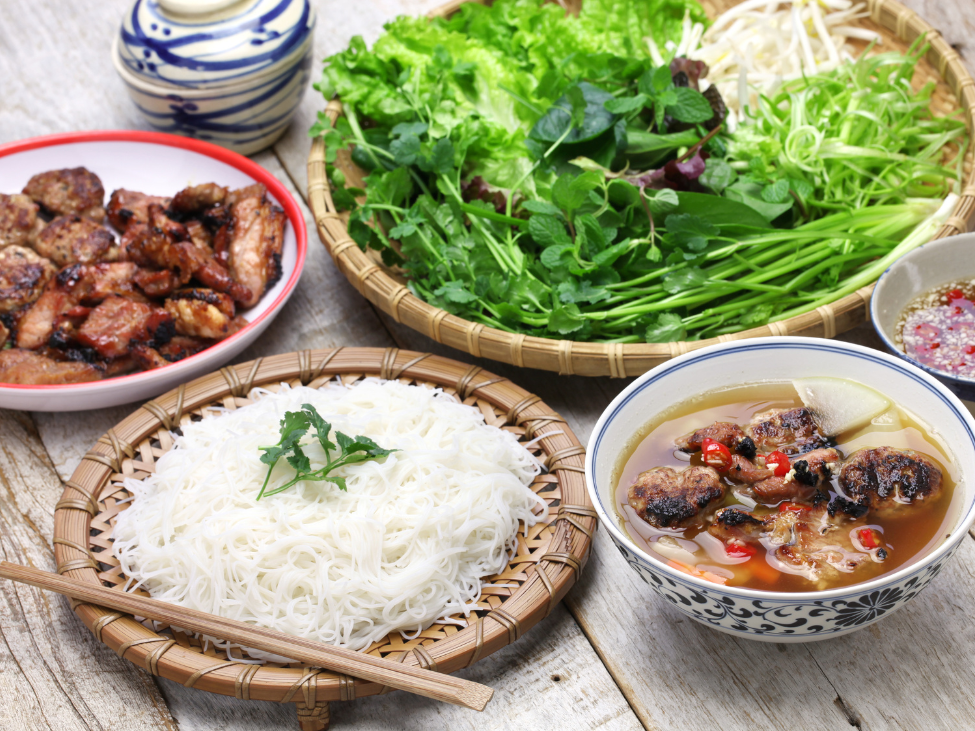The Ten Vietnamese Dishes That Taught Me What Home Really Means
- Steve Mueller

- Jun 15
- 5 min read

There are moments in your life when you realize you've been searching for something without knowing what it was. For me, that revelation came at 5:47 AM on a Tuesday in Hanoi's Old Quarter, sitting on a plastic stool that had seen more stories than I ever will. I was holding a bowl of pho that Mrs. Lan had been perfecting since before I was born, and suddenly understood why I'd never felt truly satisfied by any Hanoi food tour before I started living them instead of just leading them.
Ten years ago, I thought I knew Vietnamese food. I could distinguish between regional pho styles, knew my bun from my banh, and had eaten at every restaurant the guidebooks recommended. But knowledge isn't wisdom, and eating isn't understanding. The real education began when I stopped being a visitor and started becoming part of the story—when vendors began recognizing my face, saving me the last bowl of their best broth, asking about my family like I was part of theirs.
These ten Vietnamese dishes didn't just feed me; they taught me what it means to belong somewhere, how tradition survives through small acts of daily devotion, and why the most profound connections happen over shared meals in places too small for tourists to notice.

The Pho That Became My Morning Prayer
Mrs. Lan's pho isn't listed in any guidebook, and that's exactly how she likes it. Her shop—if you can call four plastic tables and a kitchen smaller than most American bathrooms a shop—sits at the end of an alley that Google Maps has never heard of. She's been making pho since 1987, the same year I was born, and somehow our timelines converged into this daily ritual that has anchored my life in Hanoi.
Every morning at 5:45, I park my Vespa next to her motorbike, and she starts ladling broth before I even sit down. "Same as always, Steve," she says in Vietnamese, though we both know it's never quite the same. The beef bones she uses today aren't the same ones from yesterday, the weather affects how the herbs taste, and her mood—influenced by her grandson's school performance or her husband's back pain—subtly changes how much love goes into each bowl. These variables make every pho unique, just like every day of our lives.
The broth tastes like patience made liquid, like the kind of love that shows up not in grand gestures but in the daily decision to do something perfectly, again and again. When I first moved to Hanoi, I thought consistency meant everything being identical. Mrs. Lan taught me that real consistency means caring enough to make it right, every single time, even when no one's watching.
Bun Cha and the Weight of Reputation
The day Obama ate bun cha at Bun Cha Huong Lien changed everything and nothing at the same time. Suddenly, my regular spot was flooded with tourists taking selfies with their noodles, and I felt protective of something that had never belonged to me in the first place. But Mrs. Nga, who's been grilling pork there since 1999, just shrugged and kept cooking.
"Food doesn't care about famous people," she told me while shaping another batch of pork patties. "It only cares if you make it with respect." She was right, of course. The bun cha that Obama ate was exactly the same bun cha she'd been serving to motorbike taxi drivers and office workers for decades. The only thing that changed was everyone else's perception of what made it special.
Sitting there after the tourist wave had crested and receded, I realized that authenticity isn't about being undiscovered—it's about staying true to your purpose regardless of who's watching. Mrs. Nga's bun cha tastes the same whether she's serving a president or a homesick expat, because she learned long ago that food is a form of service, not performance.
"Food doesn't care about famous people. It only cares if you make it with respect."
The Cha Ca That Connected Generations
At Cha Ca La Vong, I've watched three generations of the Doan family work side by side, each learning the precise temperature needed to sear fish without overcooking it, the exact ratio of turmeric to galangal that creates their signature marinade. The youngest daughter, Mai, is learning the family recipe the same way her great-great-grandmother did—through repetition, observation, and the kind of muscle memory that can't be written down.
One afternoon, Mai let me help prepare the fish. My hands, clumsy and uncertain, struggled with the simple task of maintaining even heat while stirring constantly. "Don't think so much," she laughed, guiding my wrist with the confidence of someone who's done this motion thousands of times. "Your hands already know what to do; you just have to trust them."
That moment taught me something profound about tradition and intuition. We spend so much time trying to intellectualize cooking, breaking down techniques into steps and recipes into formulas. But the real knowledge lives in your fingertips, in the ability to sense when oil is the right temperature by the sound it makes, when fish is perfectly cooked by the way it feels under your chopsticks. Mai's family has been passing down this intuitive knowledge for 140 years, not through textbooks but through the simple act of cooking together, day after day.
Banh Mi and the Beautiful Accident of History
The Vietnamese banh mi represents everything I love about Vietnamese culture—the ability to take whatever life throws at you and transform it into something better than what came before. French colonization brought baguettes to Vietnam, but Vietnamese cooks took that bread and made it their own, creating something that honors both traditions while transcending them completely.
At Banh Mi 25, Mr. Duc has been slicing baguettes since 1982, and watching him work is like watching a jazz musician improvise. Every sandwich is slightly different depending on what's freshest that day, what combination of flavors he thinks will work best, how he reads the customer's preferences from their posture and expression. He's never asked me what I want in my banh mi—after ten years, he knows I trust his judgment more than my own.
"Vietnamese people are good at making something beautiful from difficult situations," he told me once while spreading pâté with the precision of a watchmaker. His banh mi tastes like resilience made edible, like the proof that creativity and adaptation can transform even the most challenging circumstances into something nourishing and joyful.
The Lessons in Vietnamese Dishes
These dishes—and the people who've shared them with me—have taught me that home isn't a place you're born into but a community you're adopted by. Every time Mrs. Lan saves me the last bowl of pho, every time Mrs. Nga asks about my family back in America, every time Mai laughs at my clumsy attempts to help in the kitchen, I'm reminded that belonging is earned through small, daily acts of care and attention.
Food has been my language for learning Vietnamese culture, but more than that, it's been my pathway to understanding what it means to be part of something larger than yourself. When I lead Hanoi food tours now, I'm not just showing people where to eat—I'm introducing them to my chosen family, to the vendors who've taught me that the best meals aren't just about flavor but about connection, tradition, and the courage to trust strangers with your hunger.
The ten dishes that changed my life weren't special because they were exotic or Instagram-worthy. They were special because they came with stories, relationships, and the kind of generosity that can only be found in places where food is still an expression of love rather than commerce. In learning to eat like a local, I learned to live like one too.




Comments